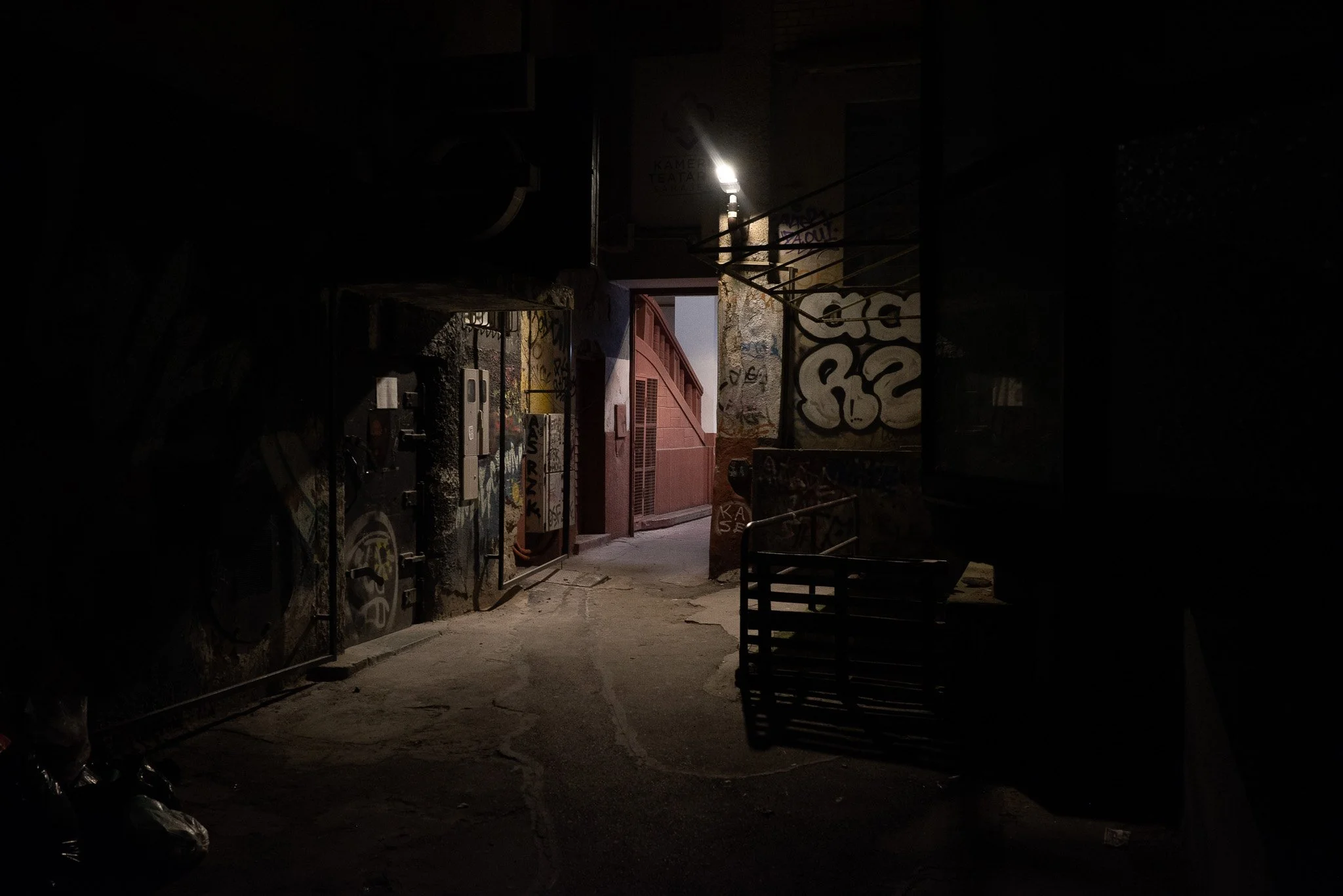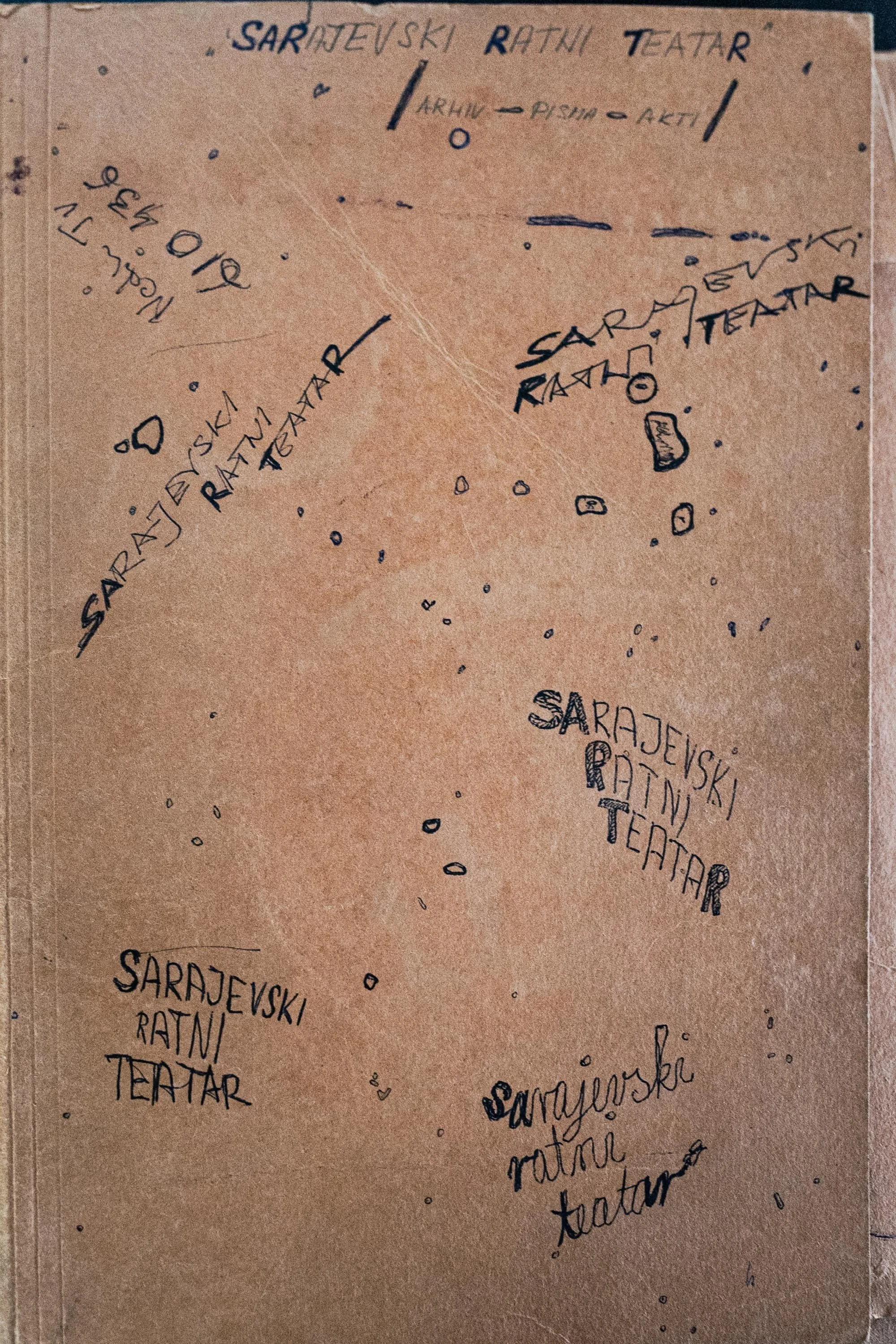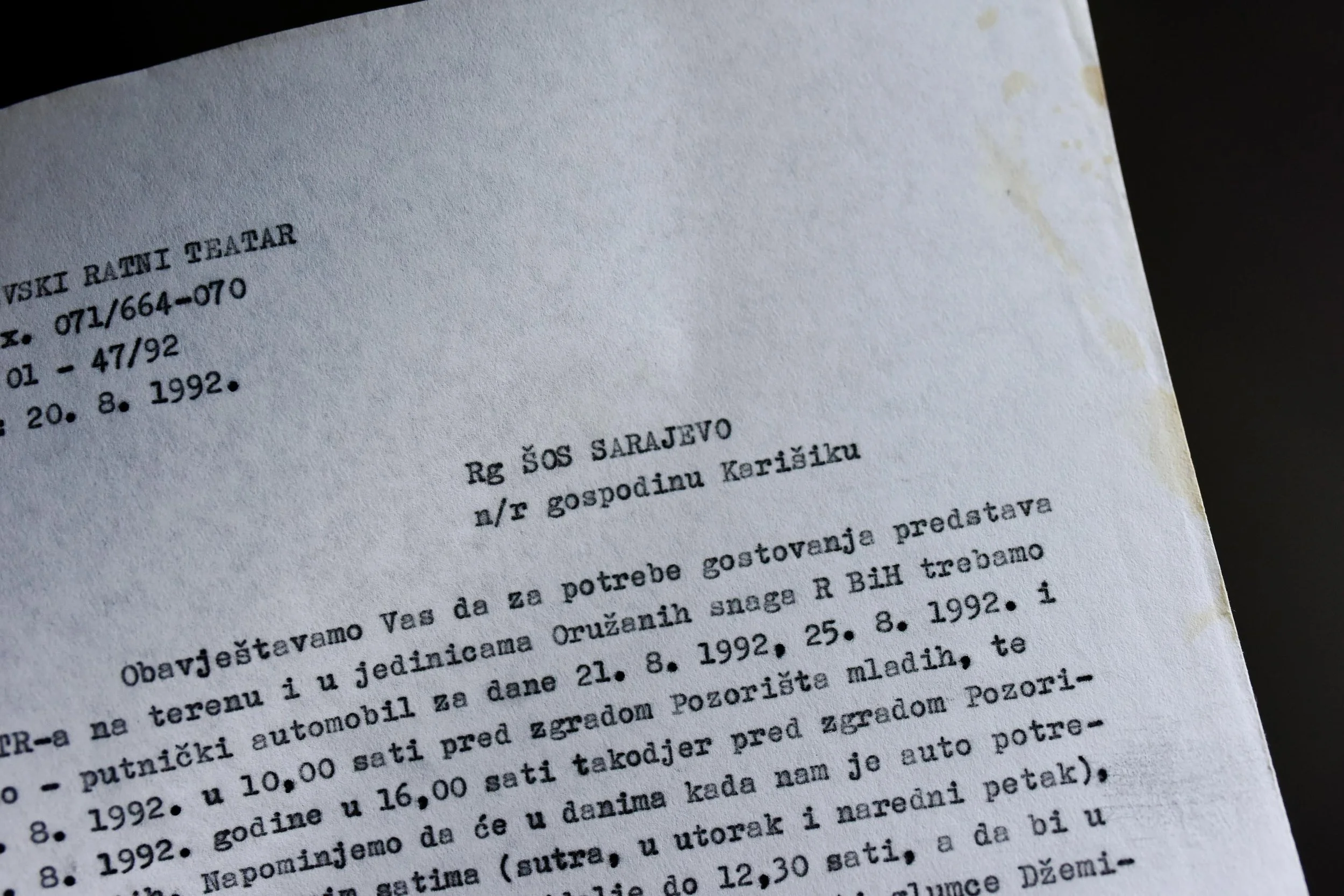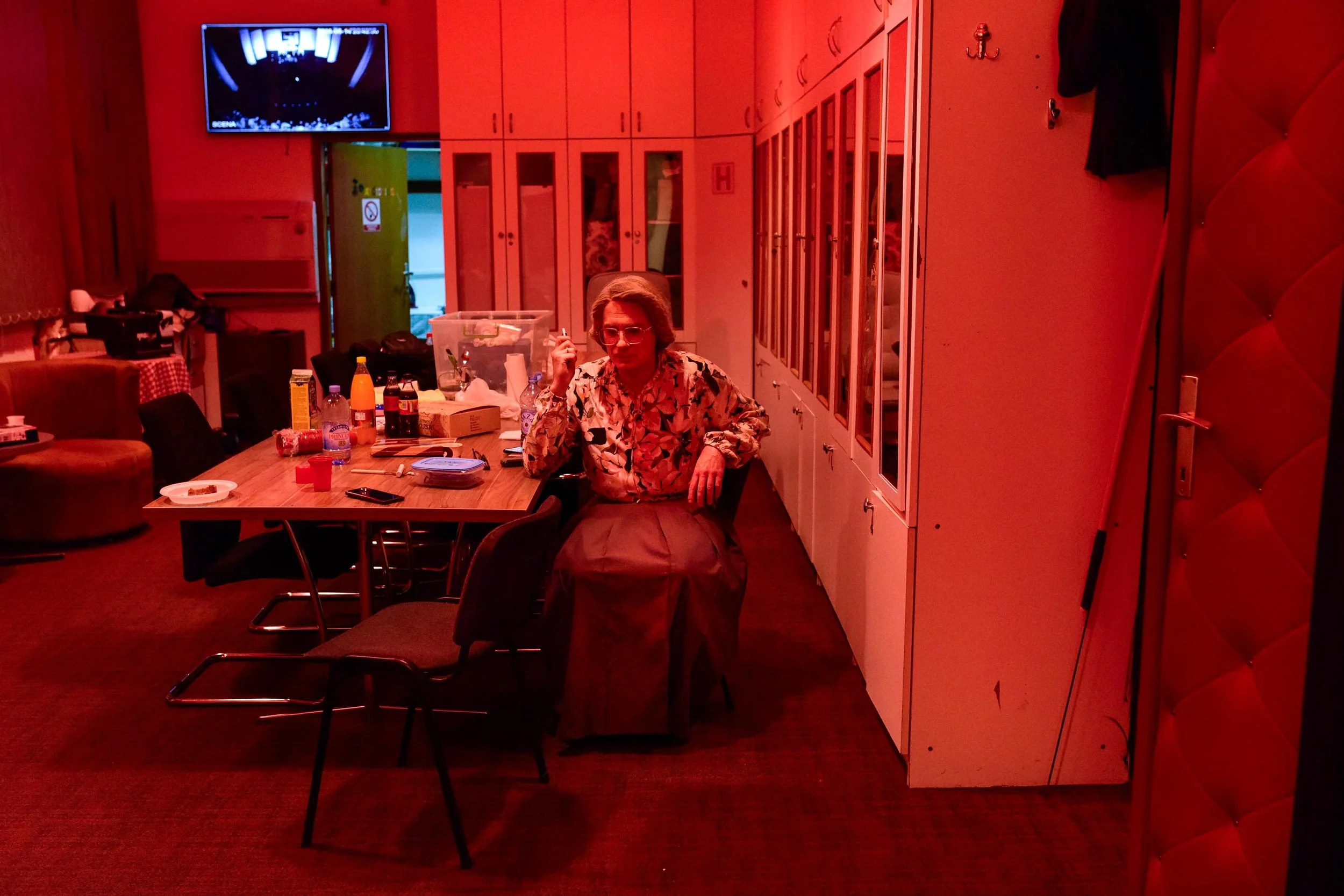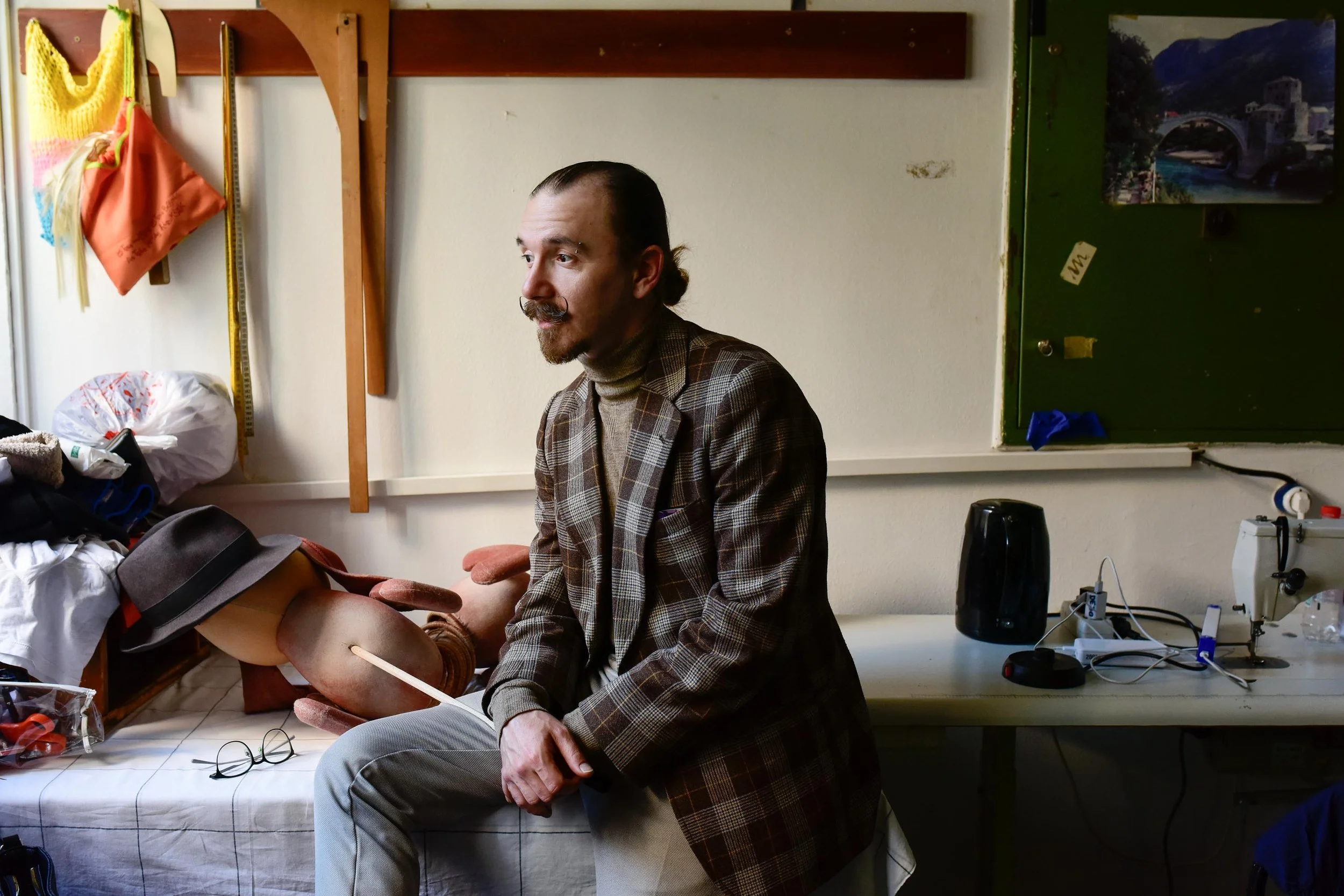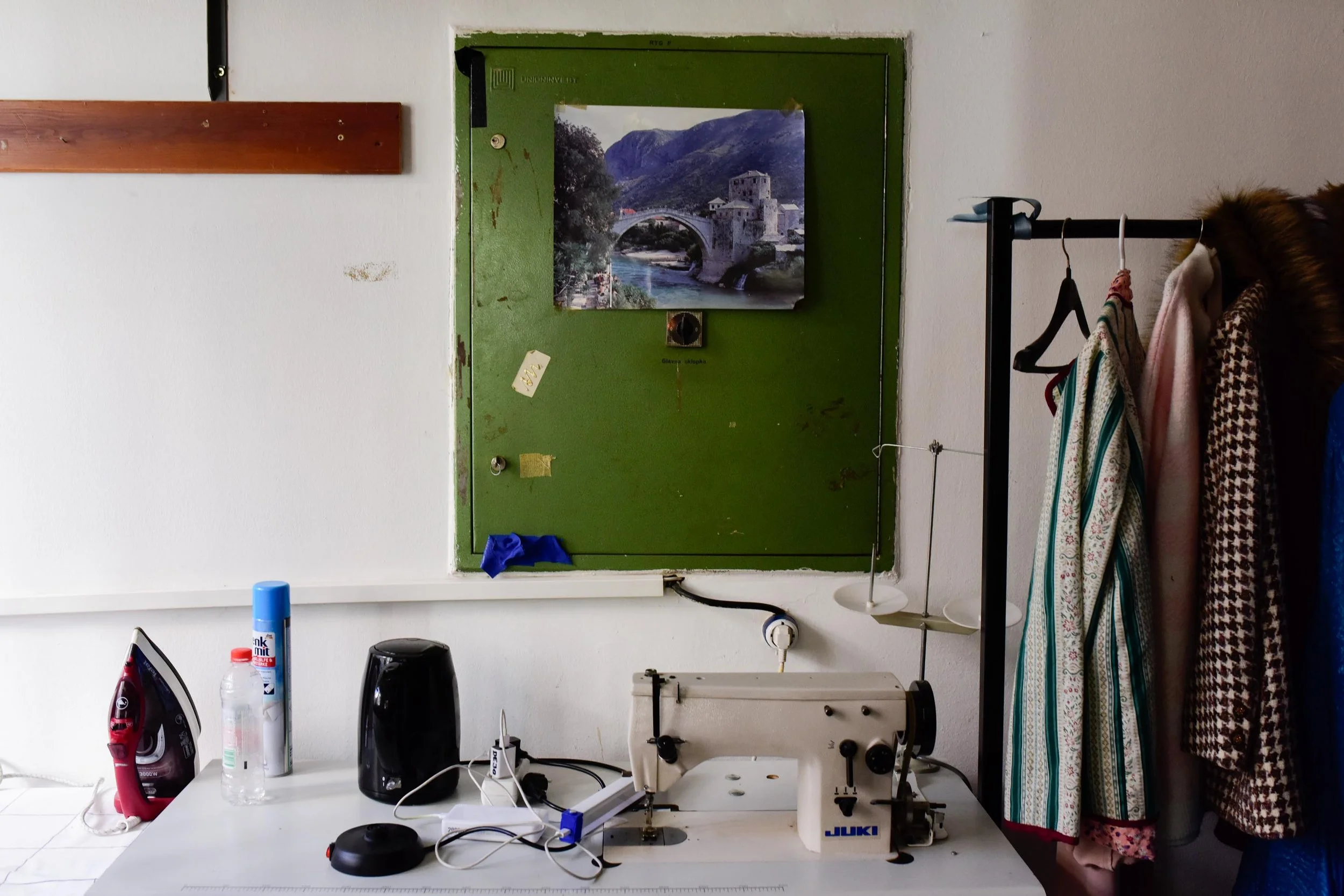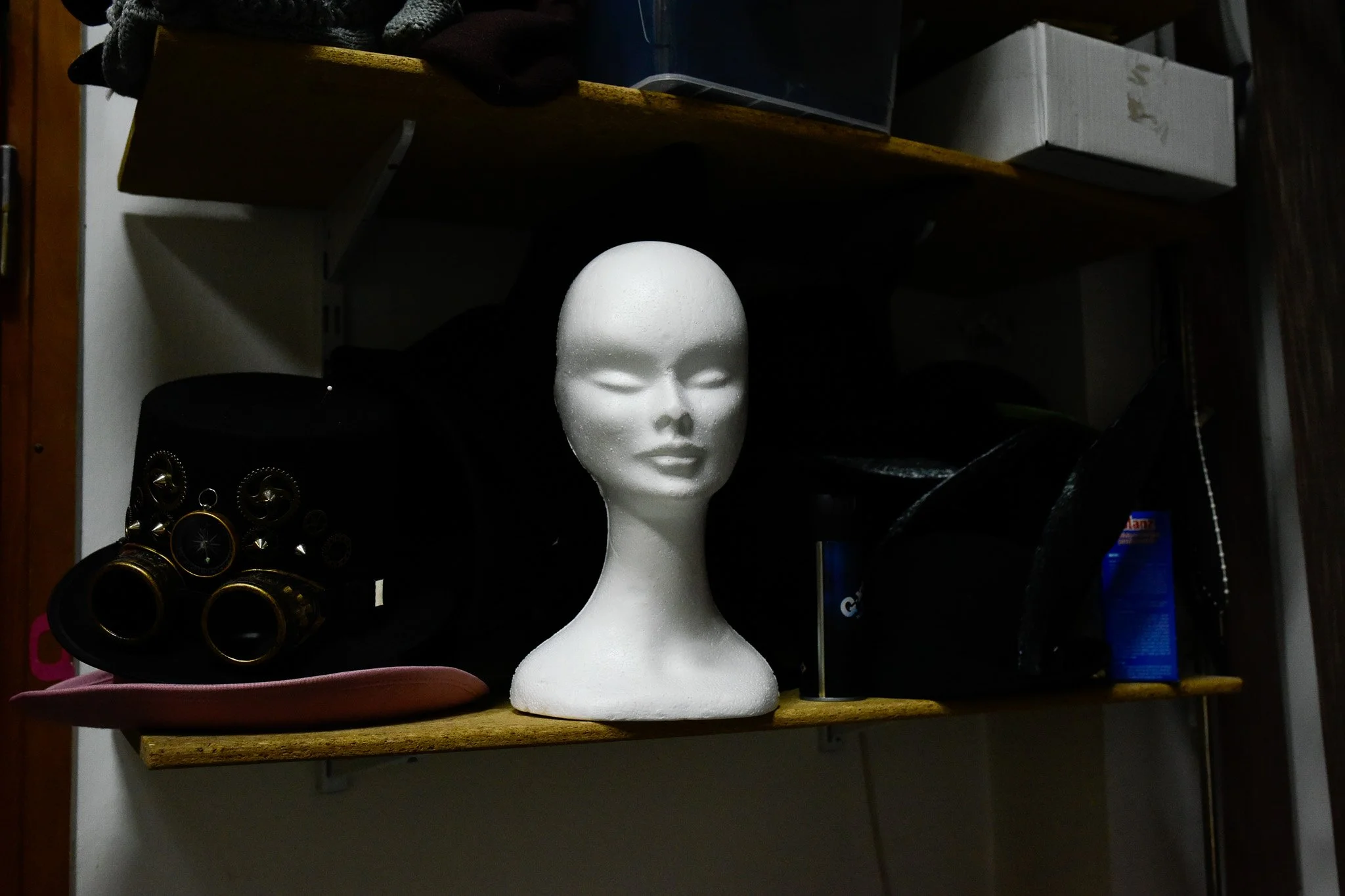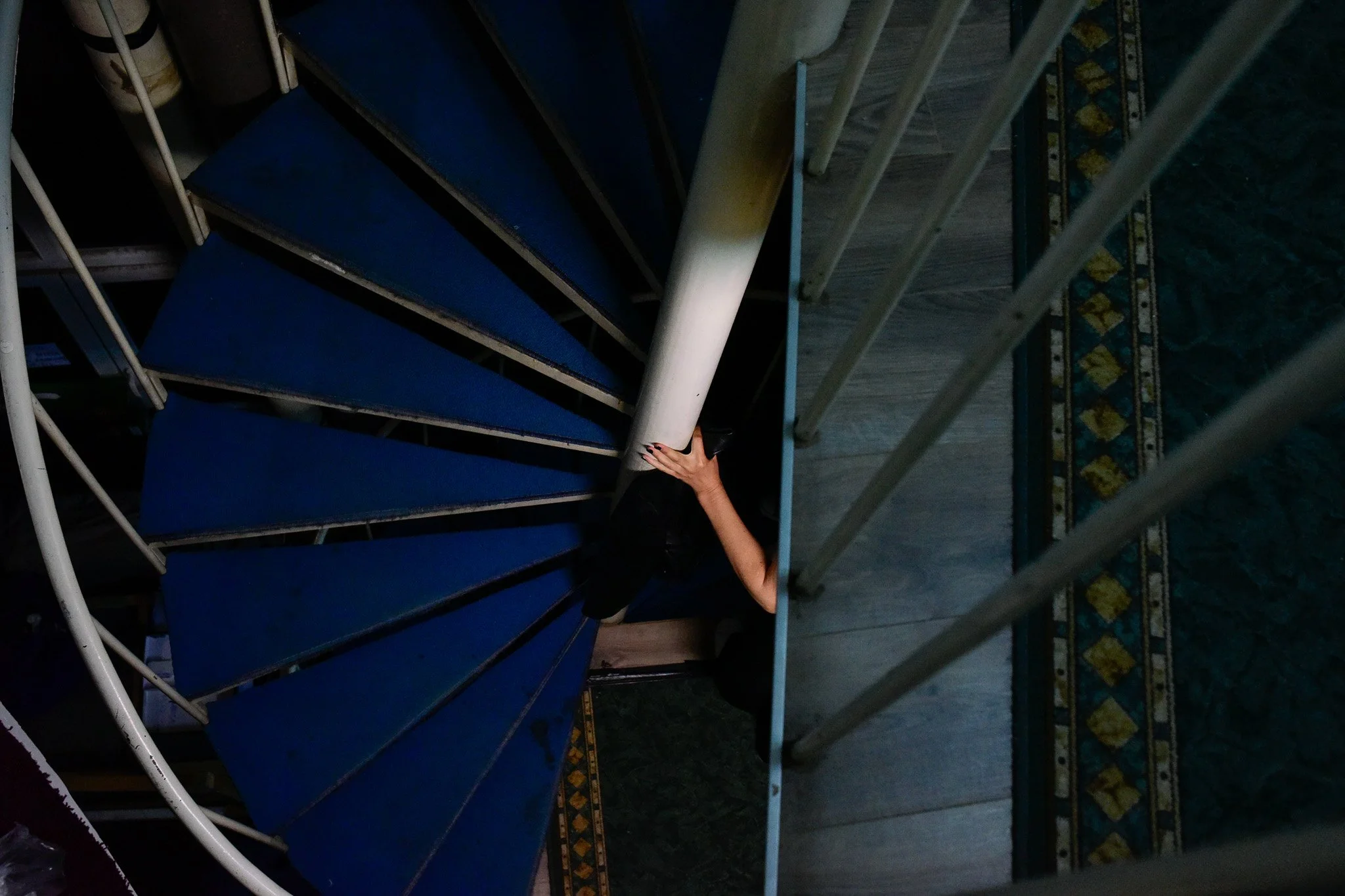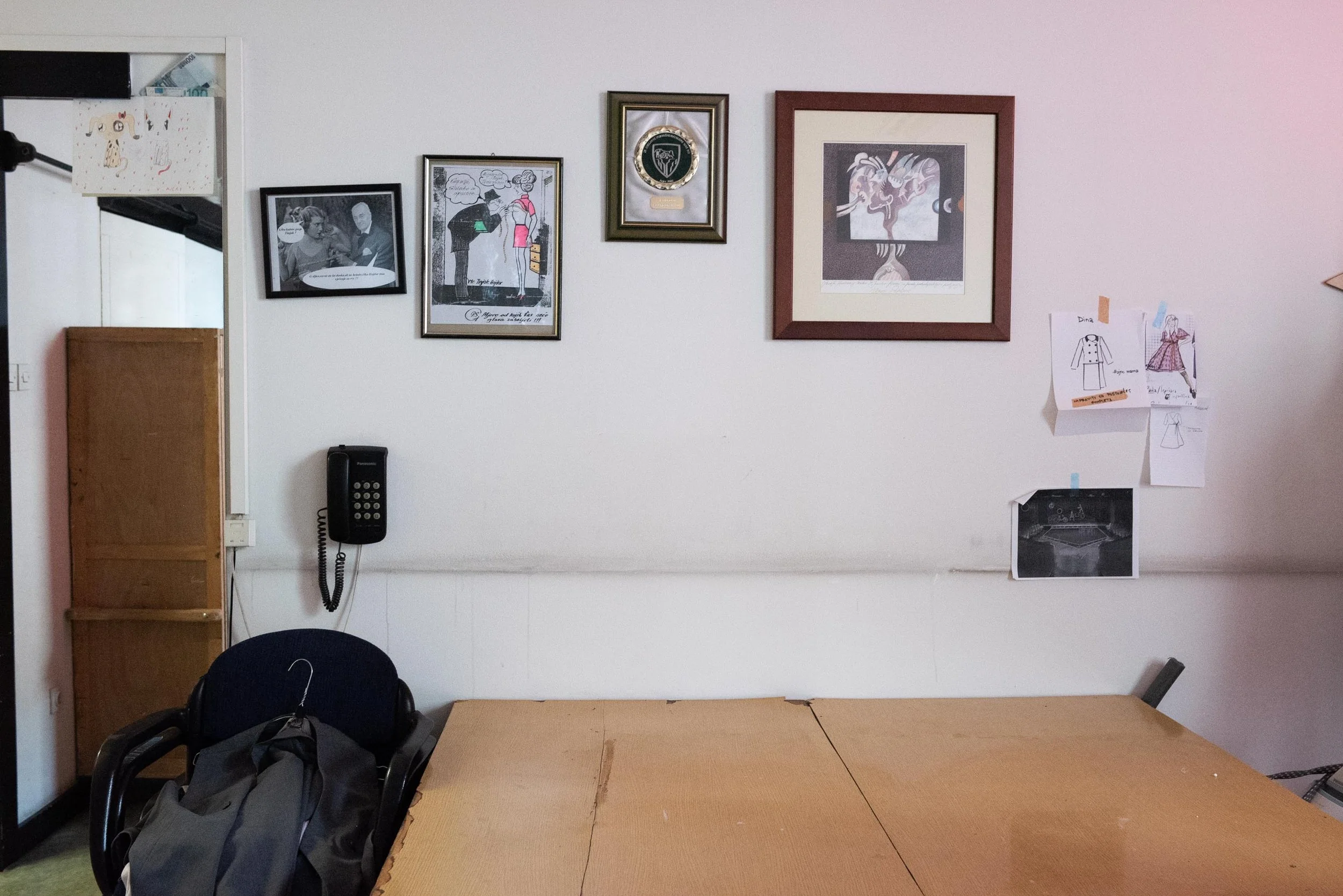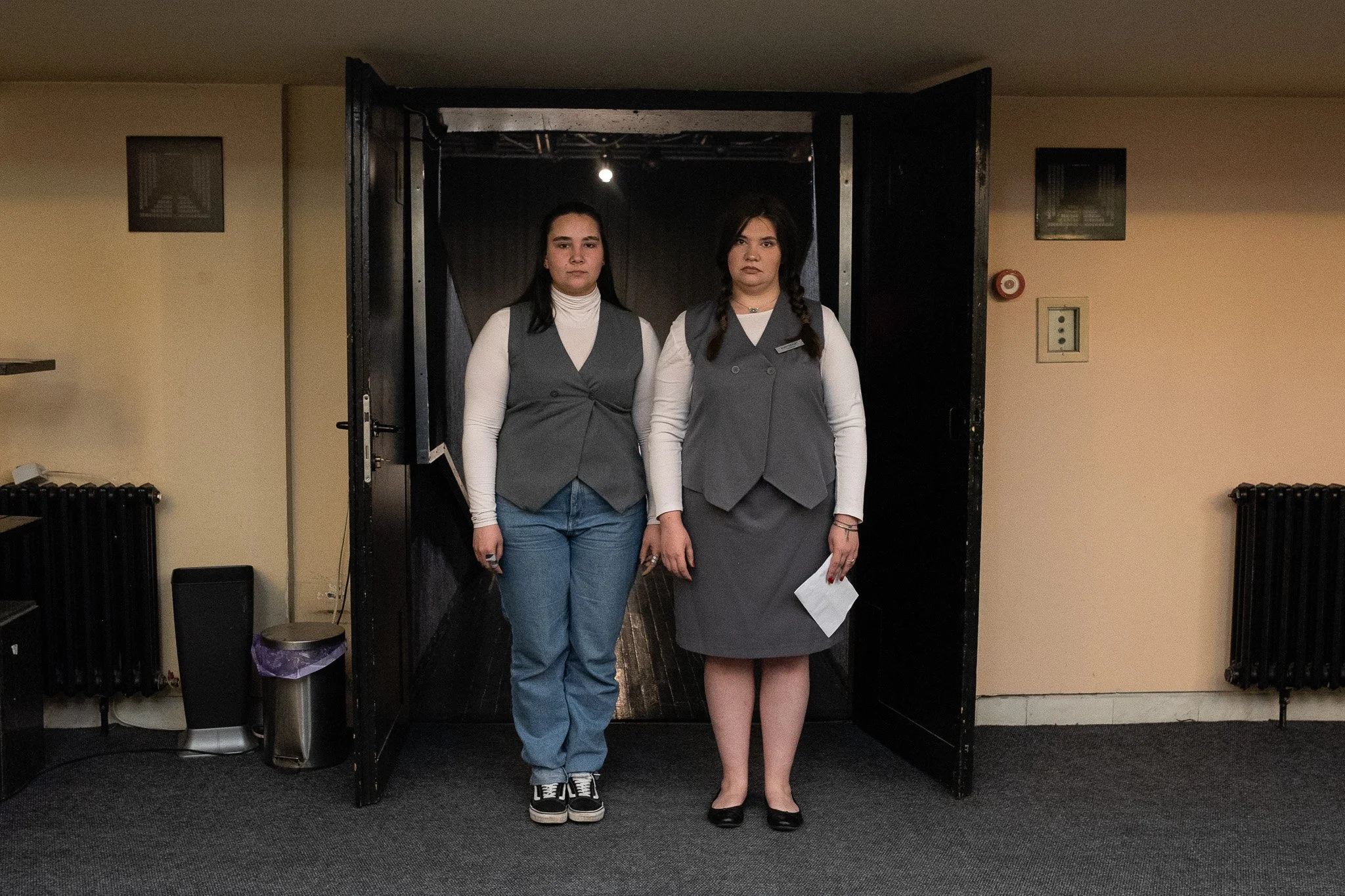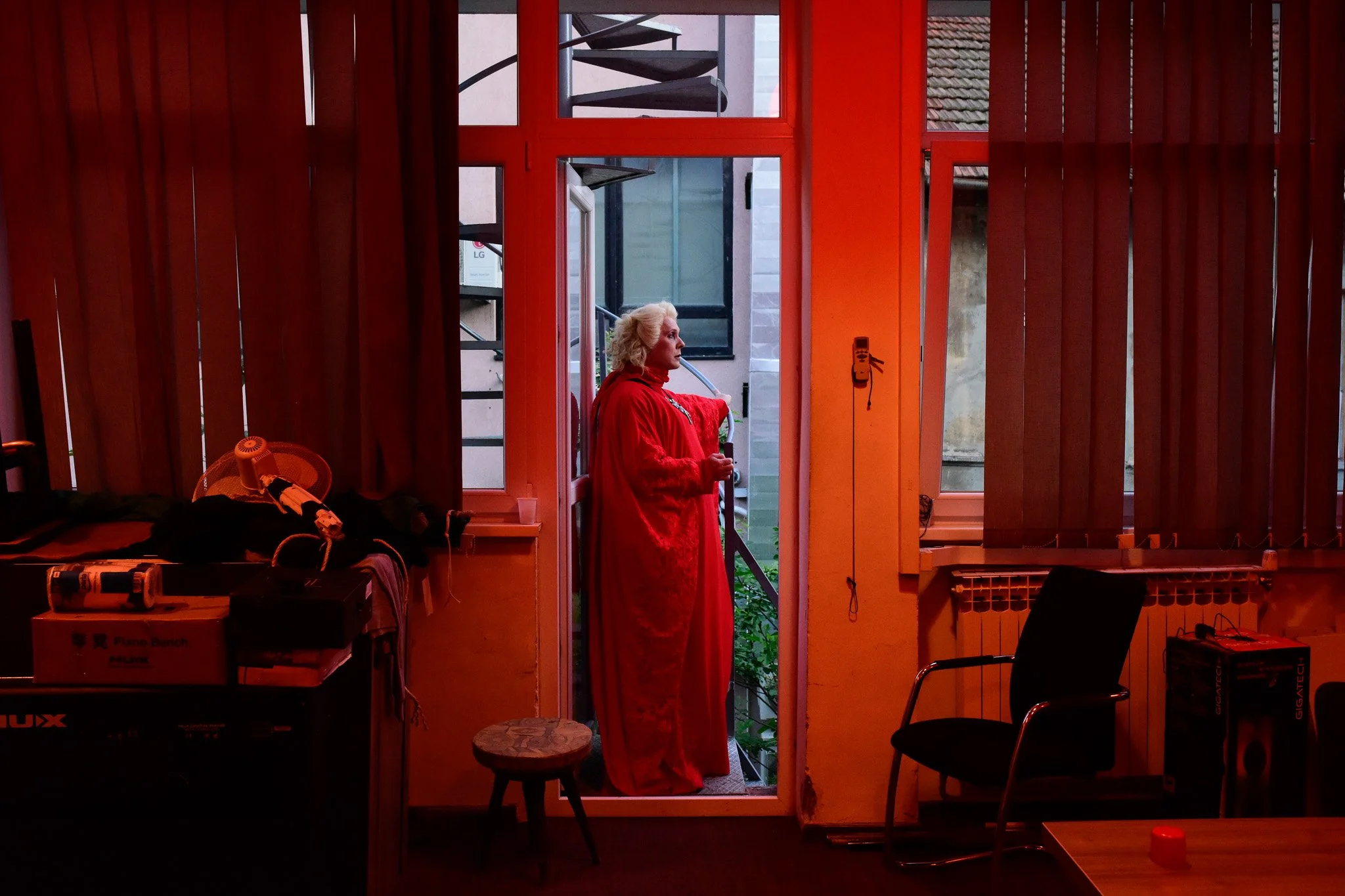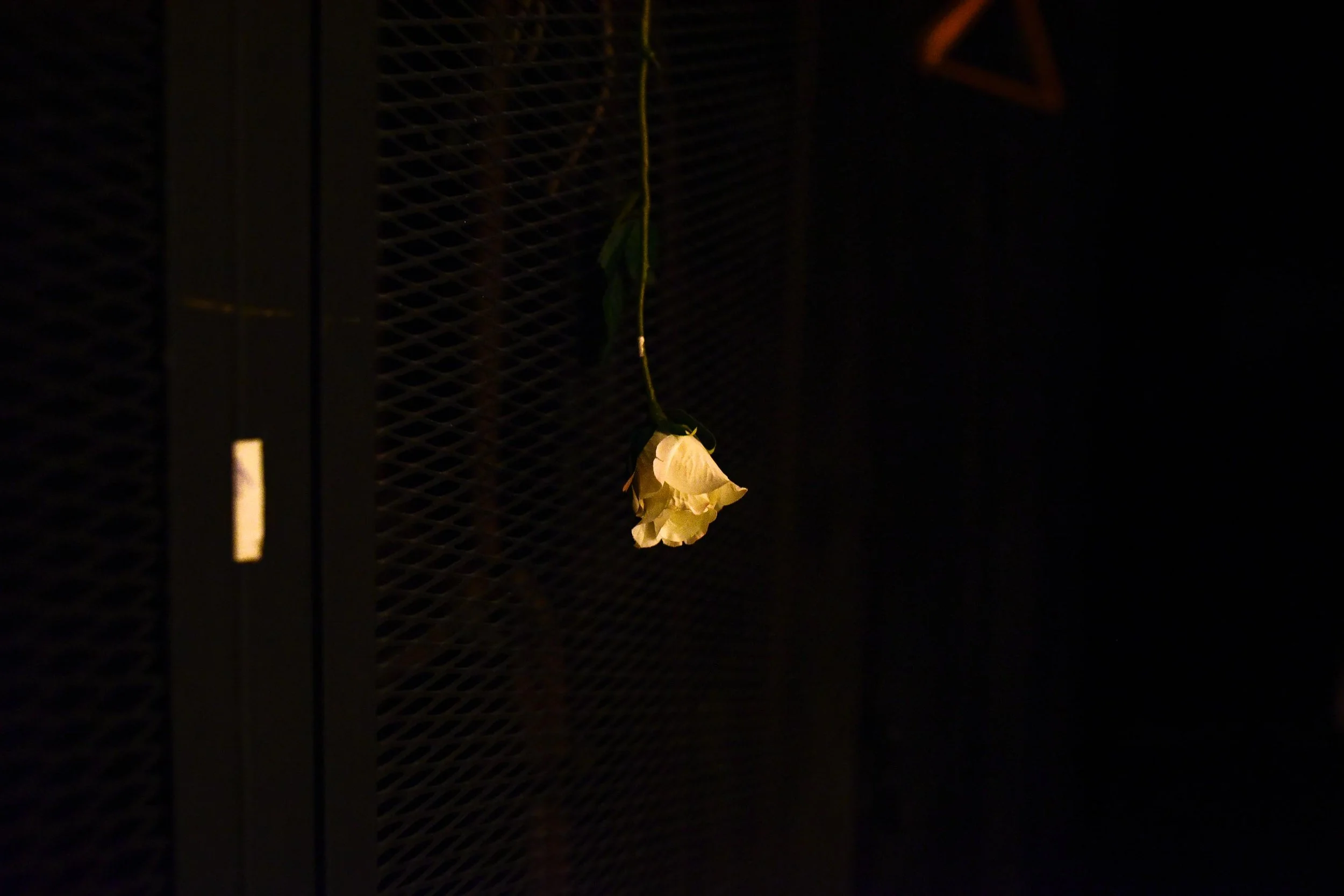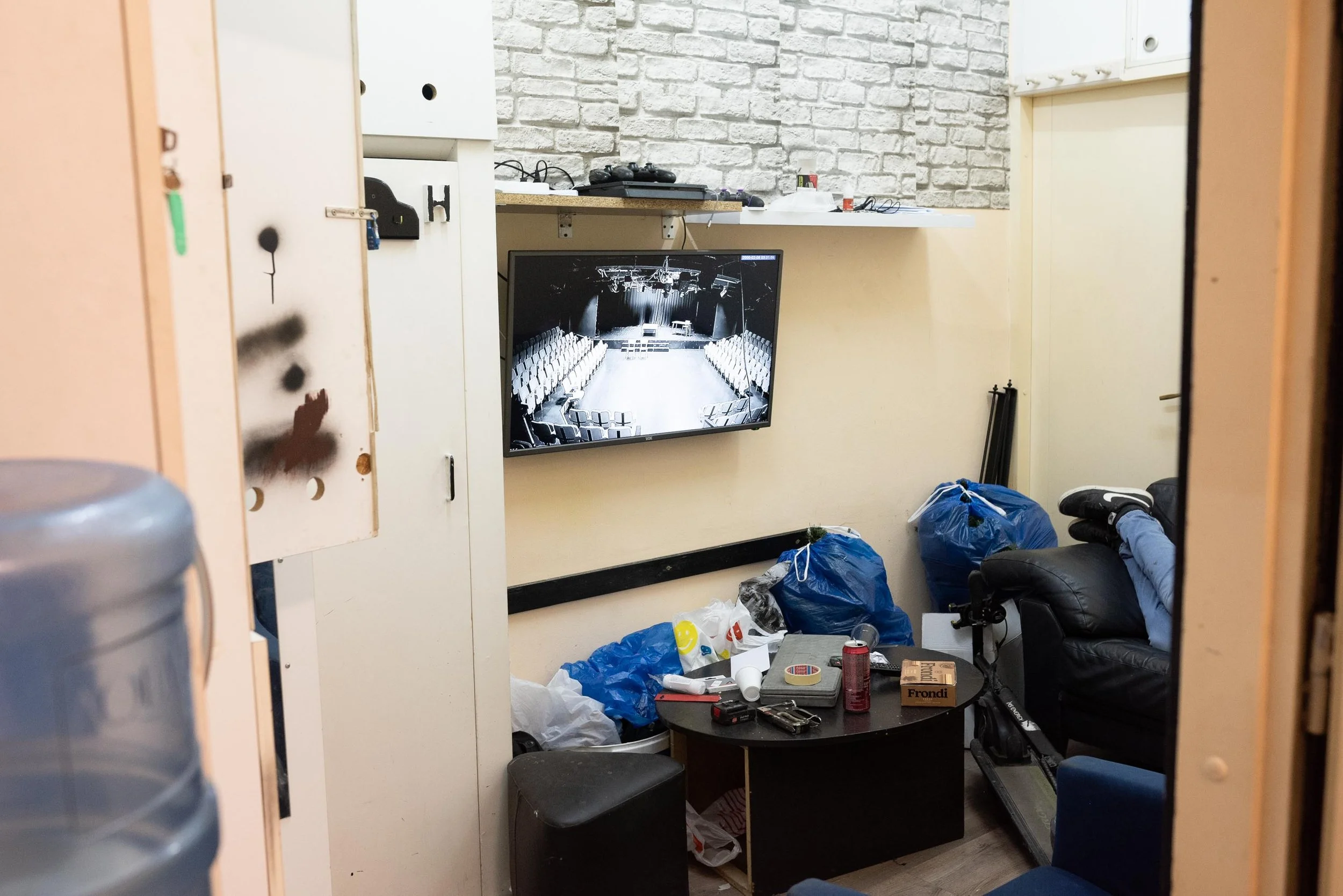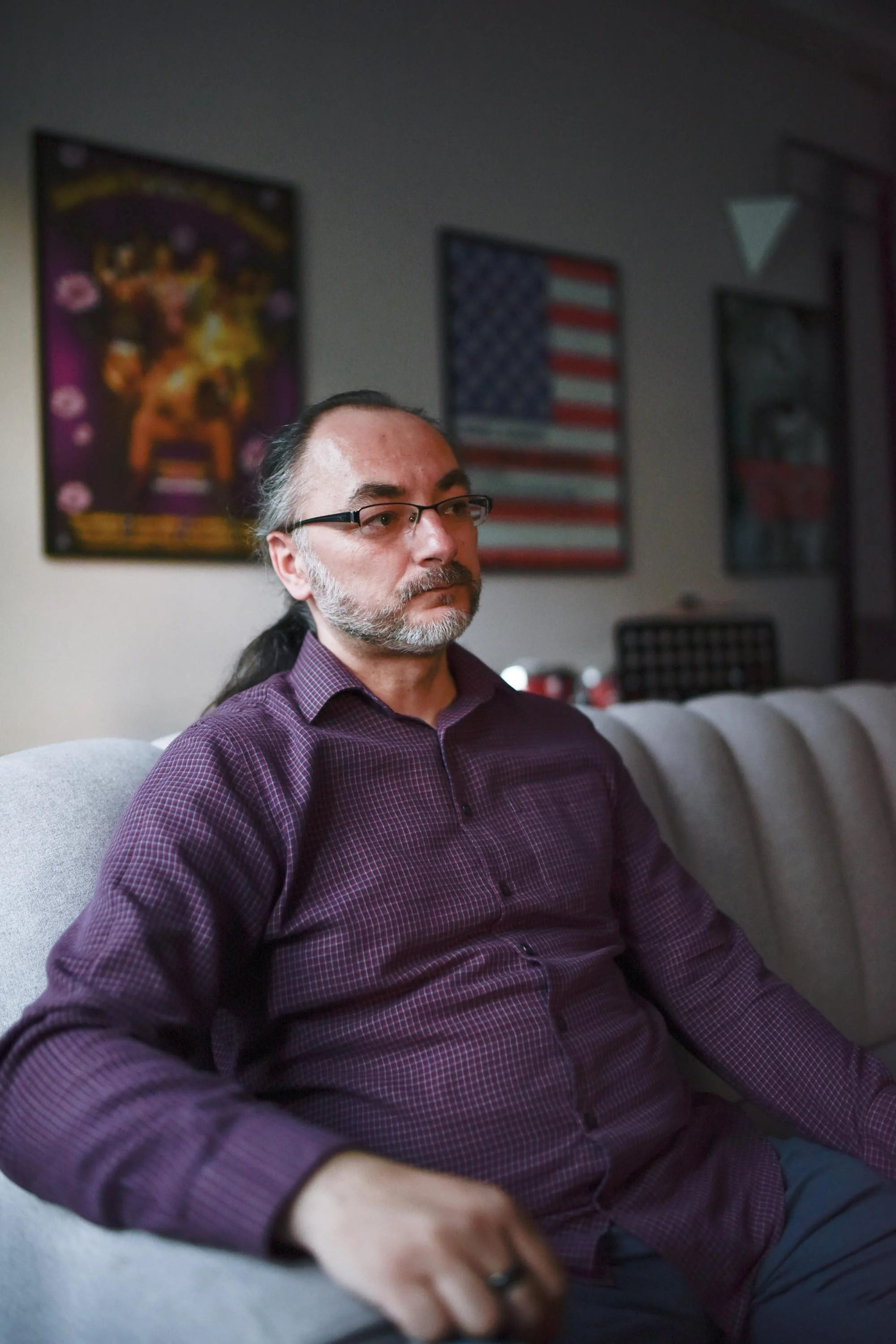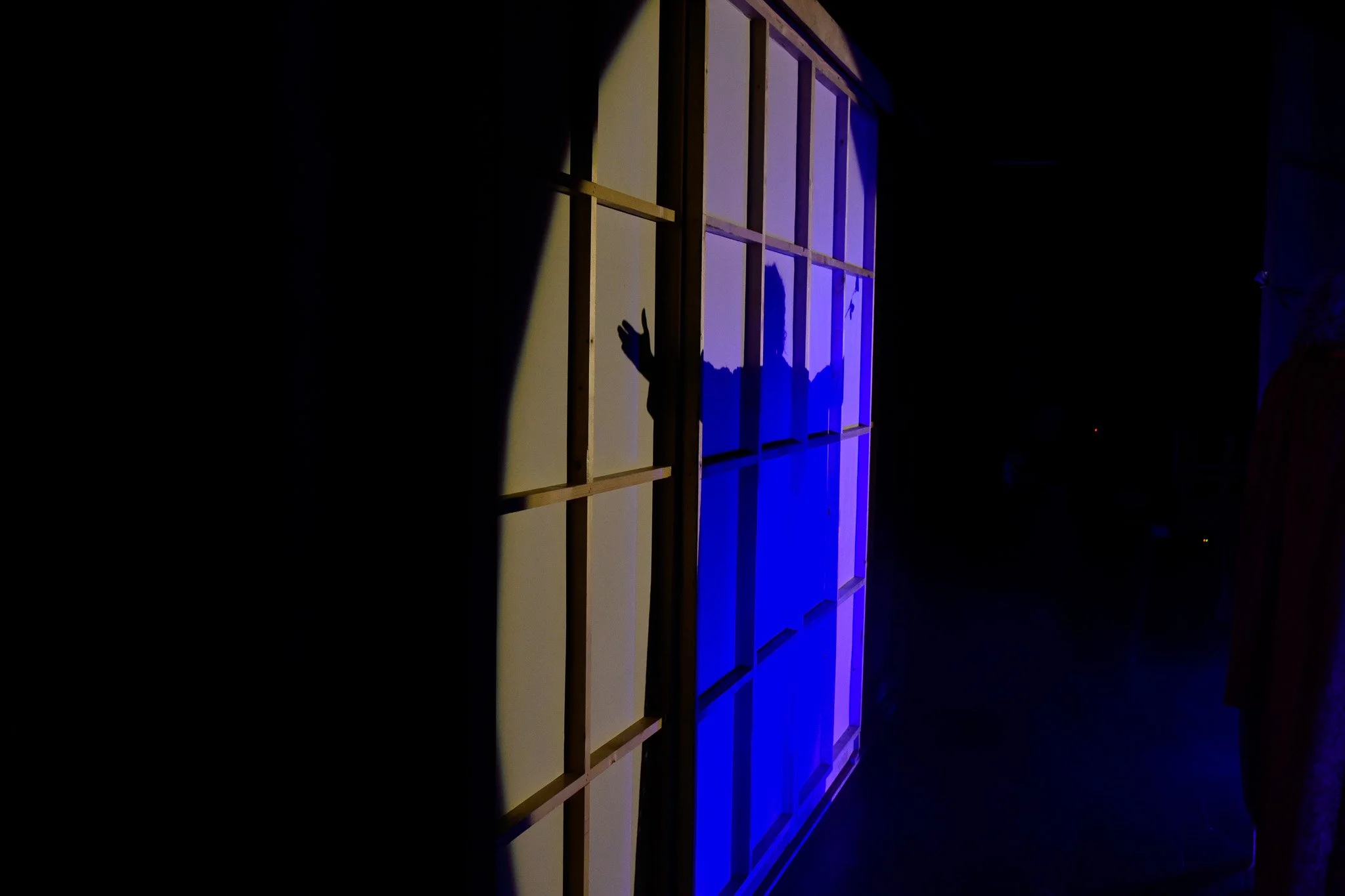BOMB SHELTER
"In Sarajevo the theatre has rescued the soul of the town sentenced to death"
Between April 1992 and February 1996, the city of Sarajevo was subjected to the longest siege in modern history. For nearly four years, its population endured cold, scarcity, and constant shelling. Despite this, cultural activity did not come to a halt. Theatres continued to operate, offering performances to a city under attack. In this context, Bomb Shelter became the first theatrical production to premiere in a besieged city. It remained on stage for sixteen consecutive months, attended by nearly 20,000 spectators—many of whom had never been to the theatre before.
This photographic project, developed in May 2025 at the Sarajevo War Theatre (SARTR), Kamerni Teatar 55, and the Youth Theatre, explores the dual role of theatre during the siege: as both physical shelter and symbolic refuge. The project was developed within the framework of a grant awarded by Magnum Photos to participate in a workshop (May,2025) under the mentorship of award-winning photographer Nanna Heitmann.
The visual approach seeks to emphasise the idea of the theatre as a protected space. During the war, many of these venues were located within large Soviet-era buildings, offering some insulation from the outside threat.
Bomb Shelter explores the traces of that theatre of resistance — not as nostalgia, but as a living act. Portraits of actors and actresses who survived the war on candlelit stages; wounded architectures that still carry the dignity of having once been ethical trenches; rehearsals unfolding today in theatres where Beckett was once heard amid the roar of shelling. The project is rooted in the conviction that even when everything disintegrates — nation, logic, hope — art creates a parallel reality that refuses to die.
As the poet Zbigniew Herbert wrote in Report from a Besieged City, the chronicler is not the one who takes up arms, but the one who bears witness. This photographic work is that visual testimony: a chronicle of the invisible forces that sustained Sarajevo when it existed only in the spirit of those who refused to surrender beauty, language, and representation.
Entre abril de 1992 y febrero de 1996, la ciudad de Sarajevo estuvo sometida al asedio más largo de la historia moderna. Durante casi cuatro años, su población soportó frío, escasez y bombardeos constantes. A pesar de ello, la actividad cultural no se detuvo. Los teatros siguieron funcionando, ofreciendo funciones a una ciudad bajo ataque. En este contexto, Bomb Shelter se convirtió en la primera producción teatral que se estrenó en una ciudad sitiada. Permaneció en cartel durante dieciséis meses consecutivos y fue vista por cerca de 20.000 espectadores, muchos de los cuales nunca antes habían ido al teatro.
Este proyecto fotográfico, desarrollado en mayo de 2025 en el Sarajevo War Theatre (SARTR), Kamerni Teatar 55 y el Youth Theatre, explora el doble papel del teatro durante el asedio: como refugio físico y como refugio simbólico. El proyecto se desarrolló en el marco de una beca otorgada por Magnum Photos para participar en un taller (mayo de 2025) bajo la tutoría de la galardonada fotógrafa Nanna Heitmann.
El enfoque visual busca enfatizar la idea del teatro como un espacio protegido. Durante la guerra, muchos de estos lugares se encontraban dentro de grandes edificios de la era soviética, que ofrecían cierto aislamiento frente a la amenaza exterior.
No exist, still a stage explora las huellas de aquel teatro de resistencia —no como nostalgia, sino como un acto vivo. Retratos de actores y actrices que sobrevivieron a la guerra sobre escenarios iluminados por velas; arquitecturas heridas que aún conservan la dignidad de haber sido en su momento trincheras éticas; ensayos que hoy se desarrollan en teatros donde alguna vez se escuchó a Beckett entre el estruendo de los bombardeos. El proyecto está arraigado en la convicción de que, incluso cuando todo se desintegra —nación, lógica, esperanza—, el arte crea una realidad paralela que se niega a morir.
Como escribió el poeta Zbigniew Herbert en Informe desde una ciudad sitiada, el cronista no es quien toma las armas, sino quien da testimonio. Este trabajo fotográfico es ese testimonio visual: una crónica de las fuerzas invisibles que sostuvieron Sarajevo cuando solo existía en el espíritu de quienes se negaron a rendir la belleza, el lenguaje y la representación.

